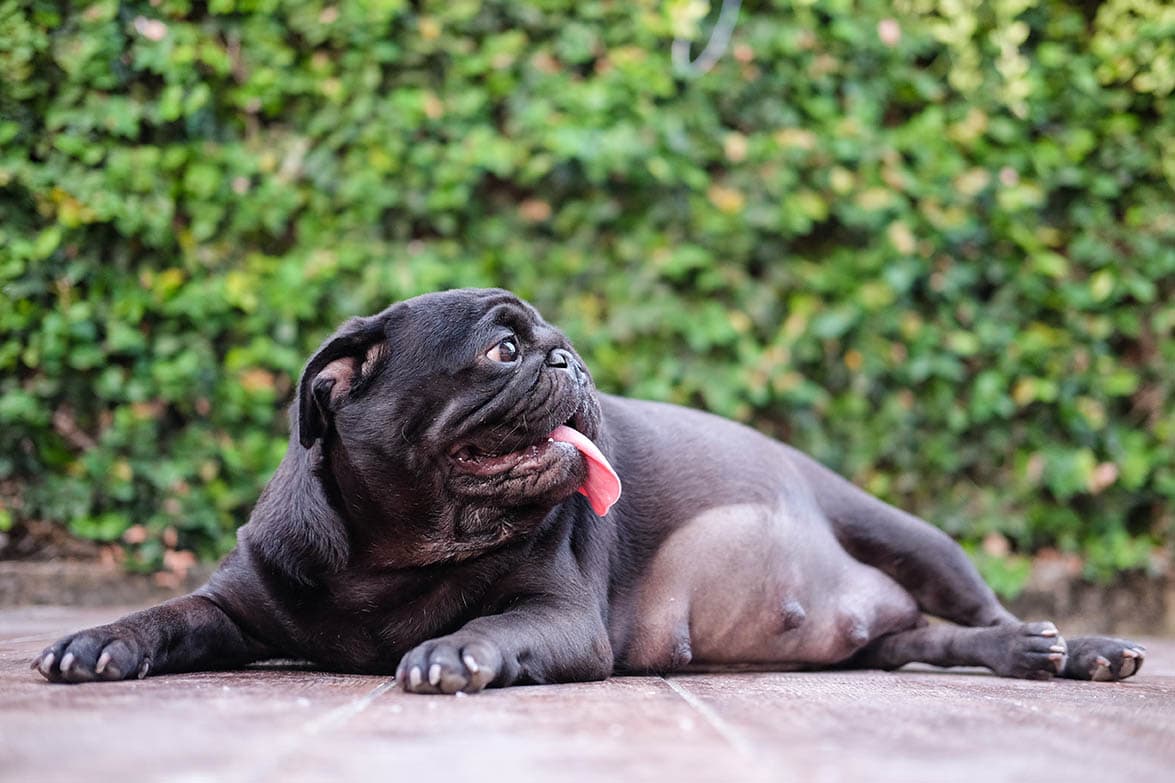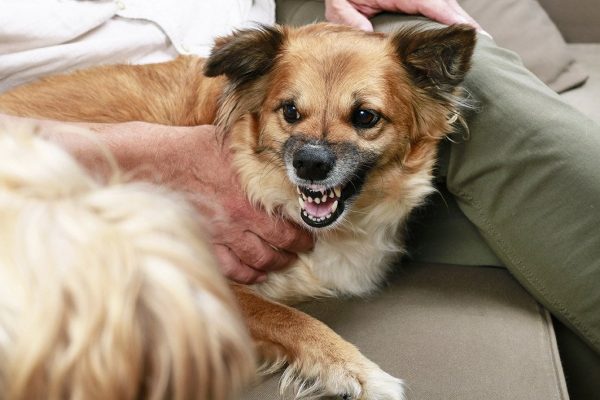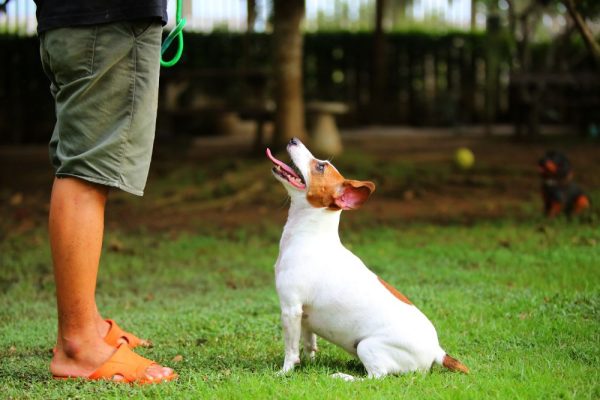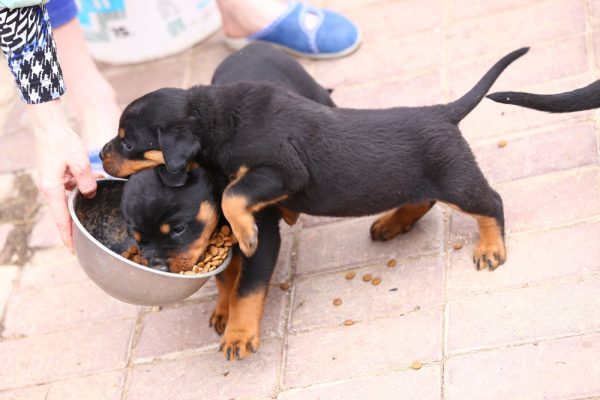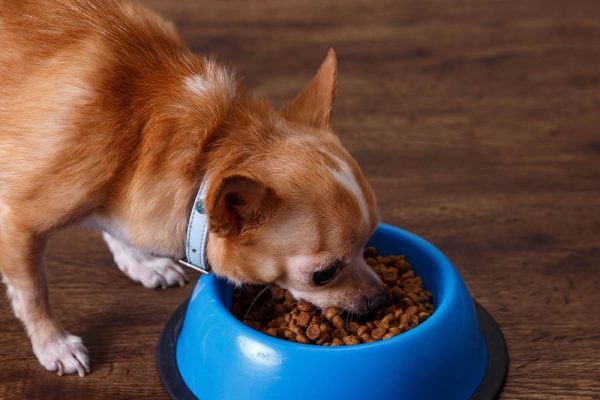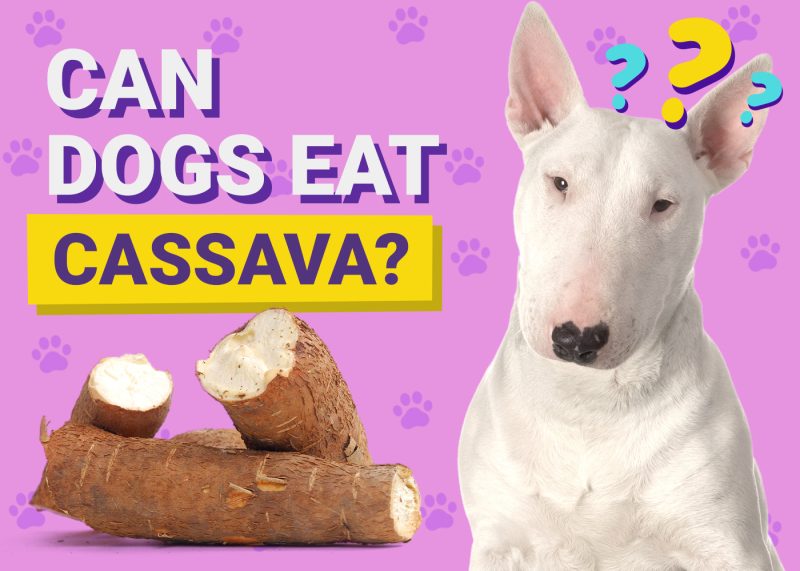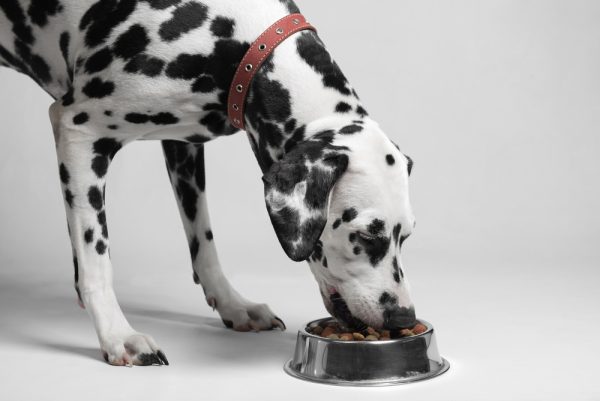In this article
Your Pug’s pregnancy is an exciting time. Soon you’ll be welcoming a litter of puppies. You want to give your dog the best possible care so she stays healthy and comfortable. This guide answers the most commonly asked questions about Pug pregnancy.

How Do I Know if My Pug Is Pregnant?
Home pregnancy tests for dogs do not yet exist. A vet can confirm a pregnancy with an ultrasound, starting around day 25. Some vets may also palpate a dog’s stomach to determine a pregnancy, but this method isn’t as reliable as an ultrasound. The ultrasound might be accompanied by blood tests to check for the levels of hormones relevant to pregnancy, or an X-ray from day 55 onwards that can give you a more reliable idea of the number of puppies.
Canine pregnancy can last anywhere from 56 to 69 days, with most pregnancies lasting around 62 to 64 days.
Pregnant Pugs: A Week-By-Week Guide
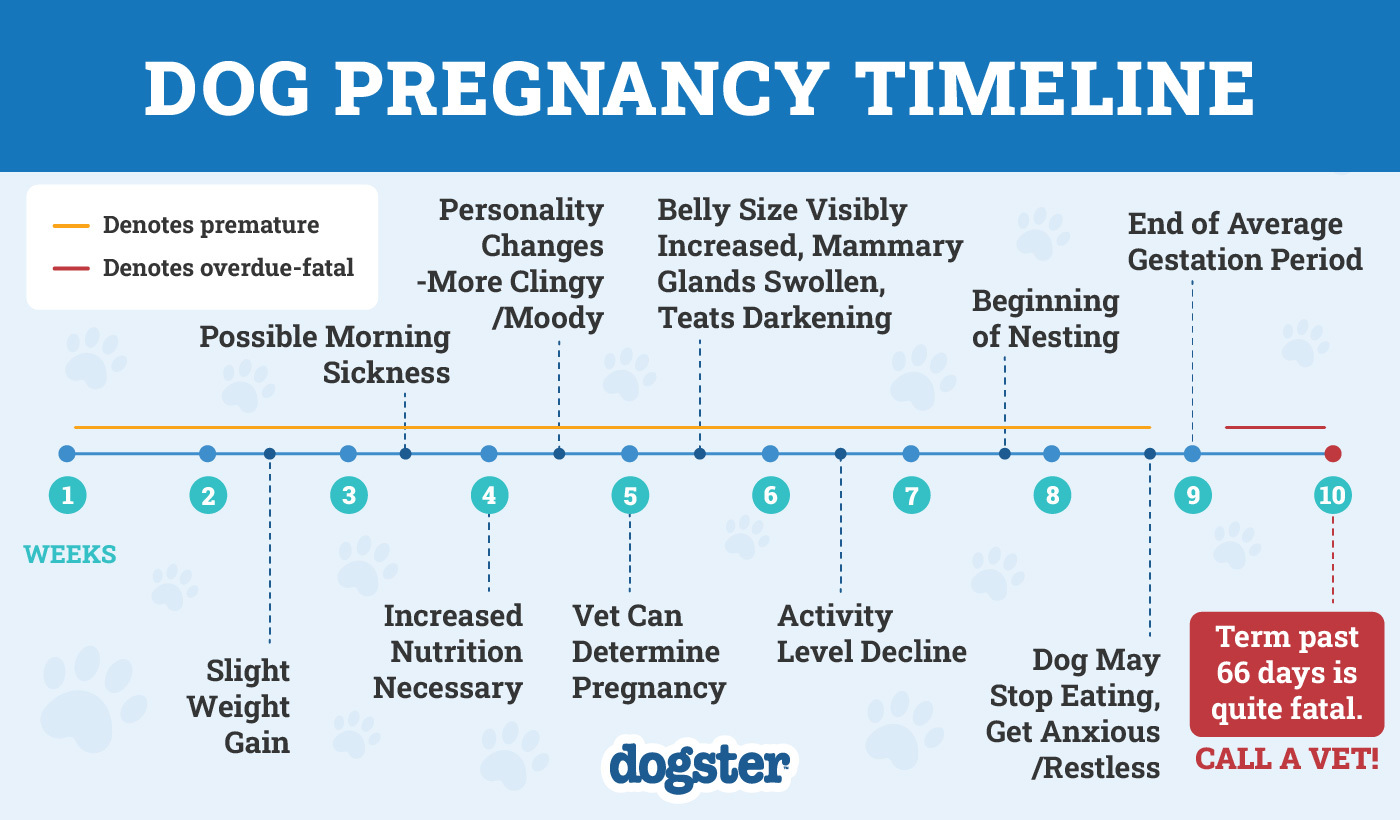
Measured from the day of conception, a Pug’s pregnancy lasts around 62 to 64 days or 9 weeks.1 That time can move quickly, especially if you didn’t suspect your Pug was pregnant right away. Below is a week-by-week glance at what you can expect.
| Pregnancy Signs | Recommended Vet Care | |
| Weeks 1–3 | Your Pug may experience vomiting, increased appetite, decreased energy, and slightly enlarged nipples.
However, most Pugs will not yet show signs of pregnancy. |
See a vet to rule out other health conditions. It might be too early to confirm a pregnancy. |
| Week 4 | Most Pugs will likely show signs of pregnancy by this time. | An ultrasound can confirm pregnancy and detect fetal heartbeats.
Discuss any dietary changes with a vet. Make sure you have a vet’s after-hours emergency phone number. |
| Weeks 5–6 | By now, your Pug is visibly pregnant. She is likely eating more and taking lots of potty breaks. Nipples may now become more obvious.
She may begin to exhibit nesting behaviors like gathering blankets and sticking close to her bed. |
Follow a vet’s recommendations for prenatal visits and care.
|
| Week 7 | Your Pug may have a decreased appetite from now until after she delivers.
You may be able to see the puppies move around in her belly. |
|
| Week 8 | You’ll know your Pug is getting ready to give birth when she becomes noticeably anxious. She may seek seclusion, dig, scratch the floor, pant, refuse to eat, vomit, and shiver 6 to 24 hours before giving birth. This may happen at week 8 (for a ‘short pregnancy’). In the final weeks of pregnancy, your Pug’s waist may look smaller as her puppies move into the birth canal. Unfortunately, this is quite difficult to appreciate in Pugs (because of their conformation). |
An X-ray can confirm the number and position of the puppies.
A vet may most likely schedule a C-section as brachycephalic dogs struggle to conceive and give birth naturally. |
| Week 9 | Your Pug will deliver her puppies this week. You might observe a copious green mucoid vaginal discharge from her vulva just before she’s about to give birth. However, this can also happen during labor or after it and is not something you should always anticipate. | It is best to opt for a C-section for Pugs. Contact a vet if you think your dog’s labor has started. |
Can a Pregnant Pug Be Spayed?
Yes, you do have the option of having your pregnant Pug spayed. This surgery would also terminate her pregnancy.
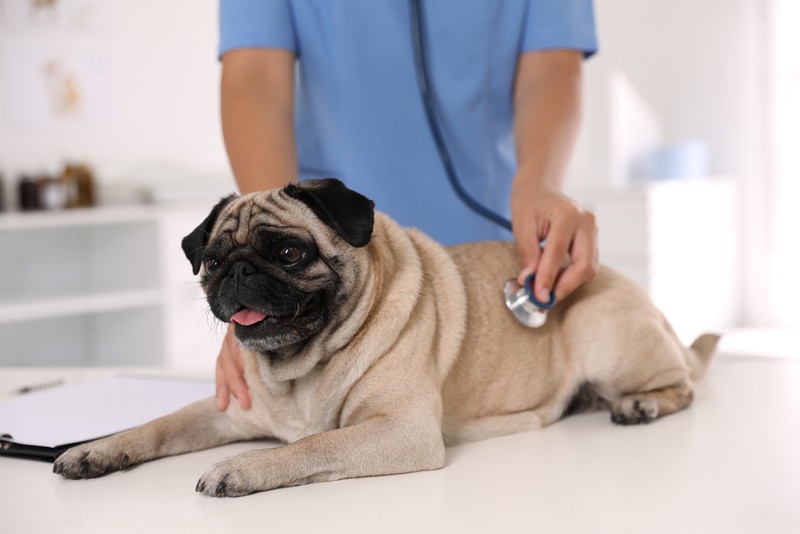
What Should I Feed My Pregnant Pug?
You will need to adjust your dog’s diet once her pregnancy is confirmed. Generally speaking, it is advised to increase your dog’s food to about 1.5 times their usual amount for the last 3 weeks of pregnancy and to double the usual amount for up to 4 to 5 weeks after her puppies are born. However, this is a generic guideline, and it’s best to have a vet assess your dog to ascertain her nutritional needs throughout her pregnancy.
If you need to speak with a vet but can't get to one, head over to PangoVet. It's an online service where you can talk to a vet online and get the personalized advice you need for your pet — all at an affordable price!

Can a Pregnant Pug Be Around Other Dogs?
There is no straightforward answer to this question. Perhaps the biggest health concern with a pregnant Pug is the possibility of contracting a parasite or illness from another dog. Some vaccines and medications may not be safe for pregnant Pugs.
However, a Pug experiencing a healthy, normal pregnancy does not need to be isolated, either. Consult with a vet about the potential risks of your Pug being around other dogs.
Can My Pregnant Pug Deliver Her Puppies Naturally?
Pugs have gained a reputation as a breed that often requires C-sections. They are among the most presented dogs for dystocia (difficulty giving birth) in clinics.2 Most vets recommend C-sections for Pugs to eliminate the risk of complicated labor. Difficulty giving birth can be dangerous for both the puppies and the female Pug.
How Many Puppies Does a Pug Have?
The average litter size across all dog breeds is four to six puppies. An ultrasound around week 4 can detect fetal heartbeats but is not a reliable method to estimate the litter size. During week 8, fetal spines will appear on an X-ray.
Can Pugs Experience a False Pregnancy?
False pregnancy is exactly what it sounds like—a female Pug shows signs of being pregnant when she is not. (False pregnancy should not be confused with a miscarriage or stillbirth.) Pseudopregnancy is a condition where sexually mature unspayed female dogs begin to show the signs of pregnancy, regardless of whether they were mated.
Signs of a false pregnancy include restlessness, swollen mammary glands, and milk production. Pugs experiencing a phantom pregnancy may also create a “nest” out of blankets and “mother” toys and stuffed animals.
Important: If your dog’s teats are producing milk, do not squeeze the milk out. Doing so will only increase the rate of milk production.
There are currently no specific diagnostic tests for pseudopregnancy, but a genuine pregnancy can be ruled out using some of the previously mentioned tests, such as measuring hormone levels or performing an ultrasound or X-ray. Contact a veterinarian if you suspect your dog is experiencing pseudopregnancy.
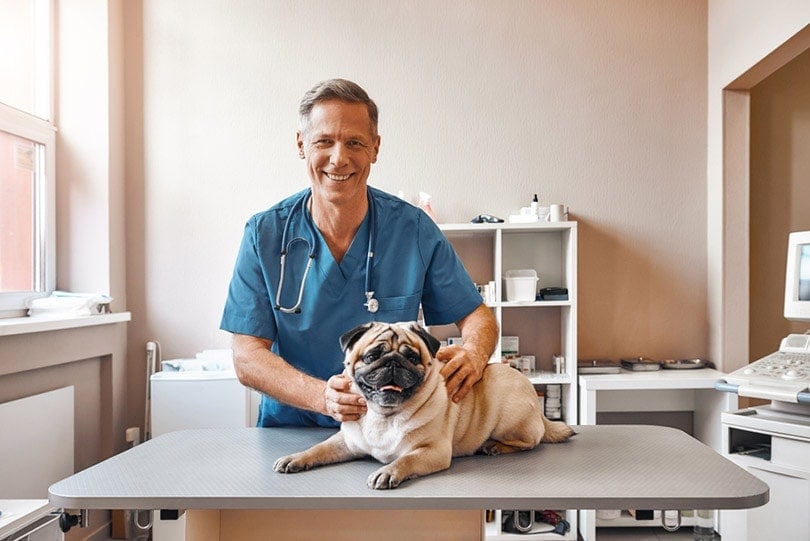

Conclusion
Pregnancy in Pugs lasts around 9 weeks or 62 to 64 days on average. Your dog will exhibit signs of pregnancy by week 4, when an ultrasound can confirm the pregnancy. Consult with a vet about dietary changes, prenatal visits, and how to prepare for birth.
At times, unspayed Pugs experience a false pregnancy after her heat cycle ends. Consult a veterinarian if your female Pug isn’t spayed and wasn’t mated but is showing signs of pregnancy.
See also:
Featured Image Image Credit: Ezzolo, Shutterstock

